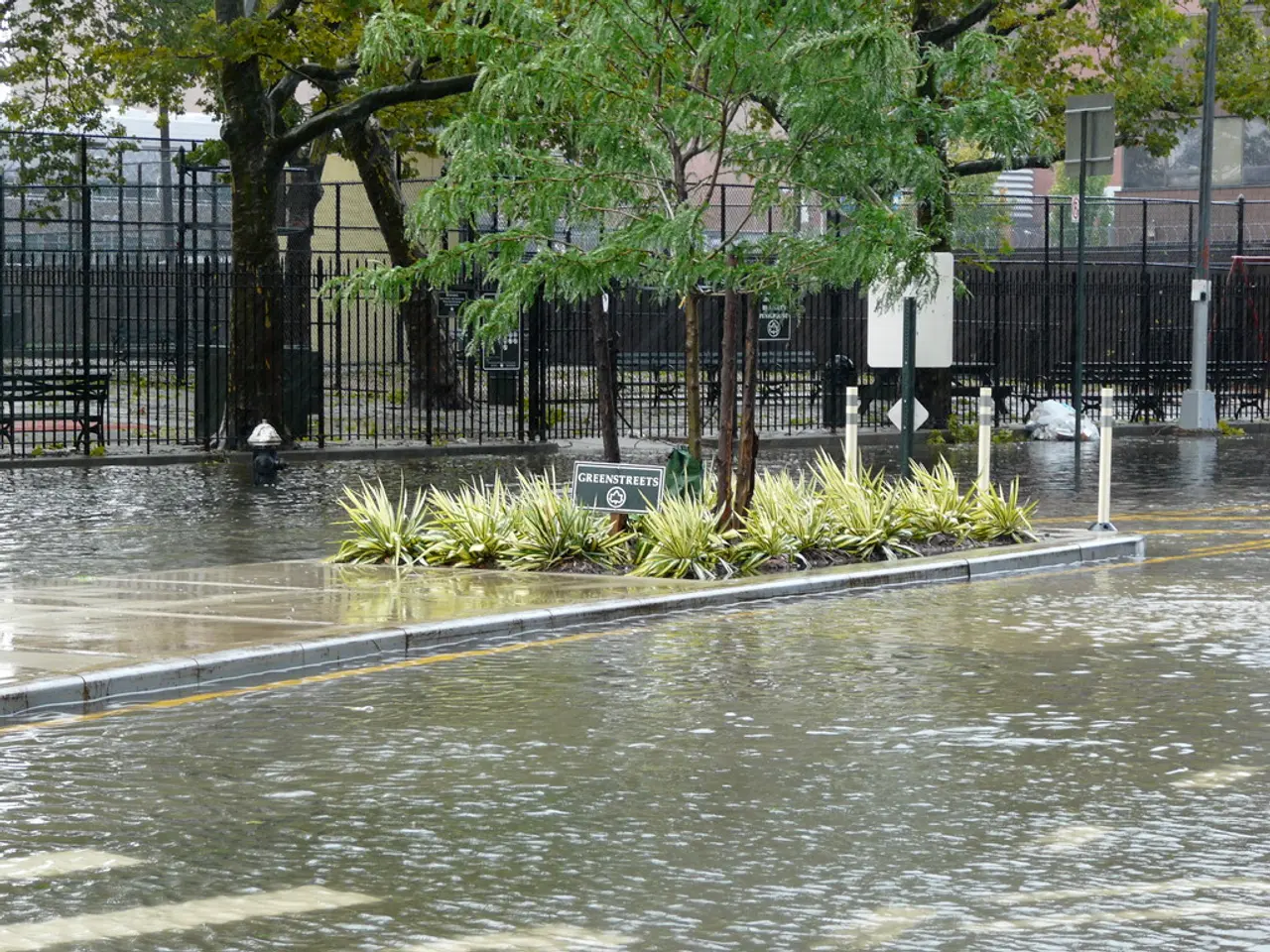Strategies to Eliminate Muskrats from Your Property: Six Proven Techniques
In the tranquil waters of ponds, lakes, and marshes across the Midwest, Northeast, and parts of the Pacific Northwest, a small, semi-aquatic rodent known as the muskrat has made its home. These creatures, resembling small beavers with brown fur, thick bodies, and large, partially webbed hind feet, can be both a fascinating sight and a potential nuisance for homeowners and landowners.
Muskrats average two and a half pounds and two feet long, including their long, black, mostly hairless, vertically flattened tail. They are nocturnal but can be active during daylight hours as well. These semi-aquatic rodents are prolific breeders, giving birth to up to three litters of four to seven babies each in a single year.
One of the main concerns related to muskrat populations is the damage they can cause to pond and stream banks with their burrowing. This activity can lead to seepage, bank erosion, and even bank collapse, potentially causing significant issues for landowners.
To encourage muskrats to move away and leave their den vulnerable to predators, partially draining the pond in the fall can be an effective strategy. Lowering the water level by two feet for the winter can also help control their population.
Exposing the entrance to the muskrats' den is another method for population control. These entrances tend to be six to 10 inches underwater, making them difficult to identify. However, by lowering the water level, the entrances can be more easily spotted.
Once the muskrats have been relocated, using riprap and/or wire to block the burrow and the surrounding bank can prevent their return. Wire should not be used where people swim, as it will eventually corrode in water. Secure the wire every few feet with landscape staples, hooks, or decorative boulders to ensure it remains effective.
Laying six inches of gravel or coarse stone in a band extending one foot above and three feet below the water level can also discourage burrowing. This simple measure can help protect dams and pond banks from muskrat damage.
In addition to these measures, using natural repellents can help deter muskrats. Peppermint oil, garlic powder, cayenne pepper, old clothes, shoes, or dog hair can all act as effective repellents. Motion-activated sprinklers can also deter muskrats and other animal pests.
Signs of muskrat presence and damage include partially eaten plants in or near water, chew marks on trees and wood near the water, pellet-like droppings along the shore, muddy trails leading into the water, domes of vegetation and mud close to the banks or above the water level, and floating platforms made of twigs and other vegetation.
Muskrats have a varied diet, favouring the stems and roots of aquatic plants like cattails. However, they may also eat apples, legumes, grains, root vegetables, crayfish, freshwater mussels, ornamental plants, koi fish, and other small animals when these options are scarce.
By understanding the habits and habits of muskrats, homeowners and landowners can take steps to manage their populations and protect their property from potential damage.
Read also:
- Impact of Alcohol on the Human Body: Nine Aspects of Health Alteration Due to Alcohol Consumption
- Understanding the Concept of Obesity
- Tough choices on August 13, 2025 for those born under Aquarius? Consider the advantages and disadvantages to gain guidance
- Microbiome's Impact on Emotional States, Judgement, and Mental Health Conditions



